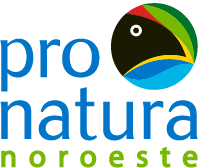Poor water availability in Baja California, Baja California Sur, Sonora and Sinaloa will challenge the agricultural and livestock sectors’ production capacity.
Northwestern Mexico is facing one of the most severe water crises of the past decade, driven by global warming and excessive water consumption.
On the one hand, drought is increasingly severe and affects greater territories. This serious weather phenomenon did not happen overnight; rather, it is the result of a long-term climate crisis that causes higher temperatures and less rainfall. On the other hand, the situation is worsened by excessive water extraction from reservoirs and underground sources without proper resource management.
So today, on World Water Day, we need to talk about the impacts of water scarcity and the actions that can be taken to mitigate the consequences of climate change and inadequate resource management.
We must recognize water as a vital resource for life.
Relationship between Water, Heat and Drought
The year 2024 has been the hottest on record, as well as the first in which the average global temperature rose 1.5 degrees Celsius above pre-industrial levels. This reference is used as a measurement because it marks the beginning of carbon and methane emissions from factories and industries.
Northwestern Mexico is no exception to the rising heat, with the states of Sinaloa and Sonora experiencing the most significant increase in their average temperature.
According to Pronatura’s analysis with data from the National Water Commission* (comparing May 2021 with the same month in 2024), Sinaloa’s heat increased by 2 percent, while it averaged above 35°C (95°F) in Sonora.
May Temperatures in Northwestern Mexico (°C)
Drought, in turn, is a phenomenon characterized by a prolonged lack of water, particularly rainfall. With the climate crisis, significant changes in global drought patterns have been observed.
An example is the increased intensity and frequency. With the rise in temperatures caused by the emission of greenhouse gases, evaporation accelerates and reduces the available moisture, intensifying the duration and severity of droughts.
Another ¨symptom¨ is the variability in rainfall that shows irregular patterns. There is intense rain in short periods, followed by long dry periods, worsening the problem.
For instance, out of the 102 municipalities monitored by the National Water Commission in Northwestern Mexico, a significant number of municipalities faces severe drought just three months before the rainy season begins.
After five years, this difficult situation repeats itself, with all municipalities exhibiting some degree of drought according to the National Water Commission Drought Monitor: Abnormally dry, Moderate drought, Severe drought, and Exceptional drought.
Of these 102 municipalities, 14 fall under the exceptional drought parameter.
Exceptional Drought
SINALOA
Cosalá
Culiacán
Choix
Elota
El Fuerte
Mazatlán
San Ignacio
SONORA
Álamos
Bácum
Cajeme
Guaymas
Quiriego
Rosario
Suaqui Grande
Another 61 municipalities have extreme drought levels,14 face severe drought, and only three show moderate drought (Comondú, La Paz and Loreto in Baja California Sur).
Water scarcity in local dams
Because of extreme, prolonged droughts and decreased rain, local dams store less water.
The information provided by the National Water Commission point to a trend that looks unfavorable:
– Baja California’s 4 active dams store only 57% of their water capacity.
– In Sonora, their 9 reservoirs store only 14.3% of their total water capacity.
– Sinaloa has stored only 11.3% of the water their 11 dams could store.
However, it is not the first time that dams have low water levels because, in 2021, a similar situation occurred. The difference now is that water levels have not recovered like they had in previous years. In 2024, water extraction for farming and livestock production caused erosion.
The impact of water scarcity on livestock farming
The states of Baja California, Baja California Sur, Sonora, and Sinaloa have had a high demand for water resources, causing hydric stress on the region’s food production system. In other words, we are using more water than nature can provide.
In Baja California Sur, livestock death rate is an extreme problem, with an estimate of up to 30 thousand livestock dying of thirst. This state needs 4.3 million hectares for livestock farming, with a low rate of rangeland.
This crisis is an economic subject, since the death of livestock and the oversupply of low weight animals increase food prices due to higher demand. This will only force importation from other states of the country.
A similar situation occurs in some regions of Sonora, like San Luis Rio Colorado, where there are problems in livestock weight due to the lack of food. As a result, many animals don’t have the right weight to export to the United States. Nevertheless, 354,480 animals were exported to international markets until June 26th of 2024 according to information from Sonora’s government; a historical record.
According to Mexico’s Secretariat of Agriculture and Rural Development, the water footprint of one cow destined for beef production is 3,100,100 liters of water. This makes livestock one of the biggest water consumers in the world.
The impact of water scarcity on agriculture
Besides livestock in Sonora, wheat cultivation (the state’s principal agricultural product) also represents a high volume of water consumption. To produce one kilogram of wheat grain, an average of 552 liters of water are used in sprinkler irrigation, as well as 1,162 to 1,300 liters in gravity drip irrigation.
In Sinaloa, the situation is so critical that for the 2024-2025 agricultural cycle, a reduction of white corn cultivation areas is expected (the main planted and harvested product in the state). This crop has a high-water demand, requiring between 6,000 and 9,000 cubic meters of water per hectare each year. Only 295,000 hectares of white corn were planted during the 2024-2025 cycle. High water consumption has caused the rethinking of rationing and outage plans in municipalities with high population density, such as Culiacán.
Roberto Alfonso Zazueta Tapia, general manager of the Municipality Board of Drinking Water and Sewage System of Culiacán, explained: “We are waiting for the rain, and then we can evaluate; but the strategy is set. We simply have to see if it rains or not. We would have to ration water in the city by area, and divide the neighborhoods. One day, water for one neighborhood, and the next, water another one. It would be something like that.”
Until March, the drinking water board had 25 communities that depended on tanker trucks to deliver water. This is because there is not enough water, not even in wells.
In Sinaloa, during the 2024-2025 cycle, low water levels in dams forced them to use a total of only 490 hectares for grains and legumes, out of the 600,000 available in the State.
Actions of Pronatura Noroeste to reduce water scarcity
In Pronatura Noreste, we carry out several programs and projects for the recovery, restoration, and conservation of natural areas with water bodies of the region.
Tijuana Río Conecta
It is an inter-institutional effort in the conservation of an ecosystem within Tijuana’s urban zone, a border city south of California. Pronatura Noroeste is a direct member of the collective for the cleaning and restoring of the river by taking out solid waste and debris, as well as to restoring and reforesting with native vegetation with the support of the government, entrepreneurs and the community.
This project also has a section of environmental education for high-school students, professional students, and student groups, focusing efforts on raising awareness about dignified spaces for the ecosystem.
Colorado River Delta restoration initiative
Due to the severe drought and diversion of water delivered from the U.S. to Mexico to a network of agricultural canals for its usage in several human activities. Water doesn’t flow through the channels of the Mexican section of the Colorado River, which results in ecological and cultural impacts in the communities of the region.
For instance, it is ironic that the city of San Luis Río Colorado is located next to a dried river. And also, that the members of the Cucapá ethnic group, who call themselves the people from the river, nowadays can’t enjoy a river and the cultural services they held historically.
In an effort to revert these impacts the association Raise the River, of which Pronatura Noroeste is a member, through diplomatic efforts and in collaboration with the governments of both countries environmental volumes of water have been allocated for the restoration of more than 500 hectare of native forests within the river channel and more than 400 million cubic meters have been reserved to rekindle the river.
Conservation of the Miguel Alemán site in the Colorado River Delta
After the diplomatic effort and conservation actions, Pronatura Noroeste has restored a little over 170 hectares, which already has a guaranteed water supply for ecosystem usage and to serve as shelter to at least 122 bird species.
The Miguel Alemán site was transformed thanks to the support of donors, the federal governments of both countries and the alliance of the organizations Raise the River and the staff of the restoration crew from Pronatura Noroeste, which has been carrying out restoration and reforestation activities since 2010.
Prior to this year, the site was a semi-desert plain. Therefore, the restoration and conservation plan implied the production of native plants such as the honey mesquite, Mexican palo verde tree, Mexican palo verde azul tree, Mexican Palo verde amarillo tree and Mexican palo brea, as well as the frutilla bush, which fruit is the food of several species within four nurseries under Pronatura Noroeste.
After 14 years of conservation, the site has 122 different bird species, a positive sign for restoration.
Arroyo San Miguel Restoration
A recent project that covers 64 hectares of coastal landscape with a watershed of 242.55 square kilometers that begins at the Sierra de Juárez, it is the habitat of 112 plant species, 47 mammal species and 107 bird species, and it was declared as protected natural area under the category of a state park on September 17th, 2021.
This stream nourishes wine areas in Baja California, where it has been demonstrated that temperature increase and water shortage affects the grape production. During the 43rd World Congress of Vine and Wine a Sustainability Committee was established, of which Pronatura Noroeste is a member, along with other civil society organizations and scholars.
The restoration project involves cleaning, restoration of debris, designing interpretive trails, reforestation with native trees and the development of educational programs and volunteerism, among others.
Eco Parque de la Juventud
One of the most important strategies of Northwestern Mexico is creating the Eco Parque de la Juventud (Youth Eco-Park), which until 2020 was a place with oxidation lagoons in the municipality of La Paz, Baja California Sur.
It had five lagoons of five hectares each; they were used to transform wastewater into gray water to be used in the agriculture of the Chametla and El Centenario ejidos.
This zone is an oasis in the middle of a desert zone that can house up to 223 different bird species, it is also the site with the second highest number of species, only below San José del Cabo. Plus 16 of those birds are species protected by the Mexican government.
Ten years before the restoration project began, this site stopped working as oxidation lagoons, so the municipality government pursued to recover at least four lagoons.
A project led by the city council of La Paz, which actively collaborates with Pronatura Noroeste and other organizations such as the environmental consulting Cipactli, El Serpentario de la Paz and the laboratory of birds of the Universidad Autónoma de Baja California Sur (UABCS). The water crisis could worsen while the planet heats up and the excess demand continues.
In Pronatura Noroeste, we are certain that it is necessary to act immediately, working on specific programs in different zones of the states forming the region, to mitigate the impacts and help nature to recover.
Translated by: Fernanda Izabal, Hannah Peralta & Mayela Navarrete
Reviewed and edited by: César Egüez & G. Rubio León












